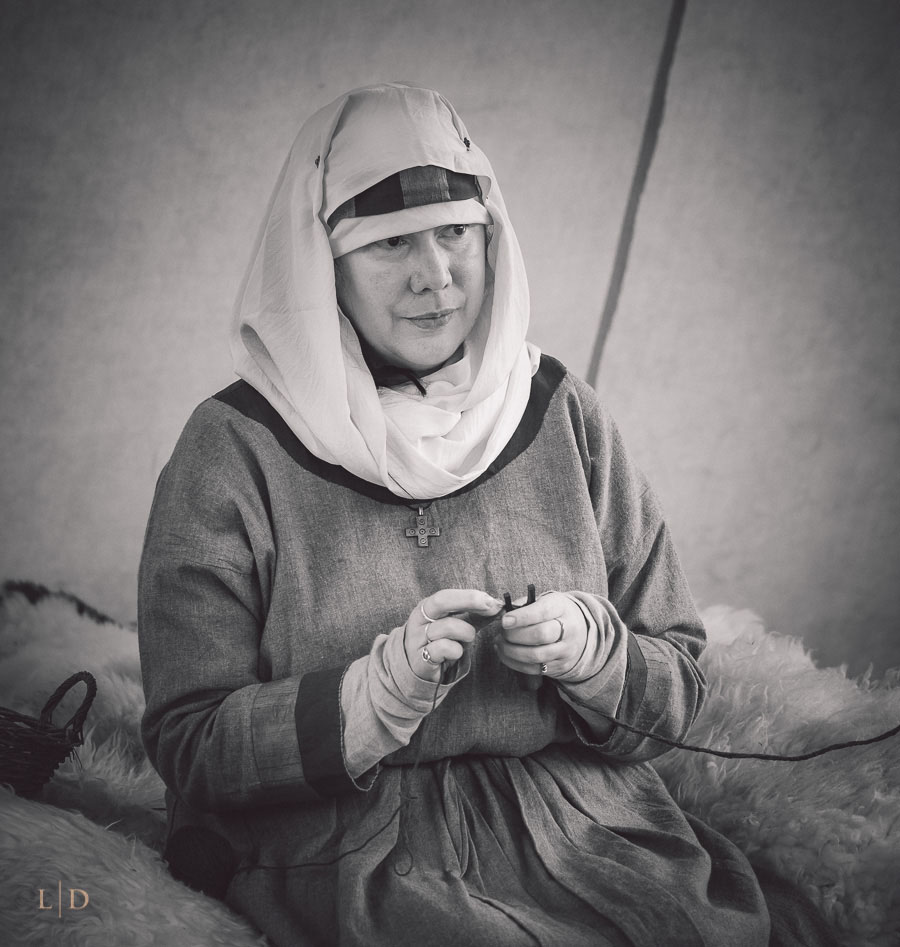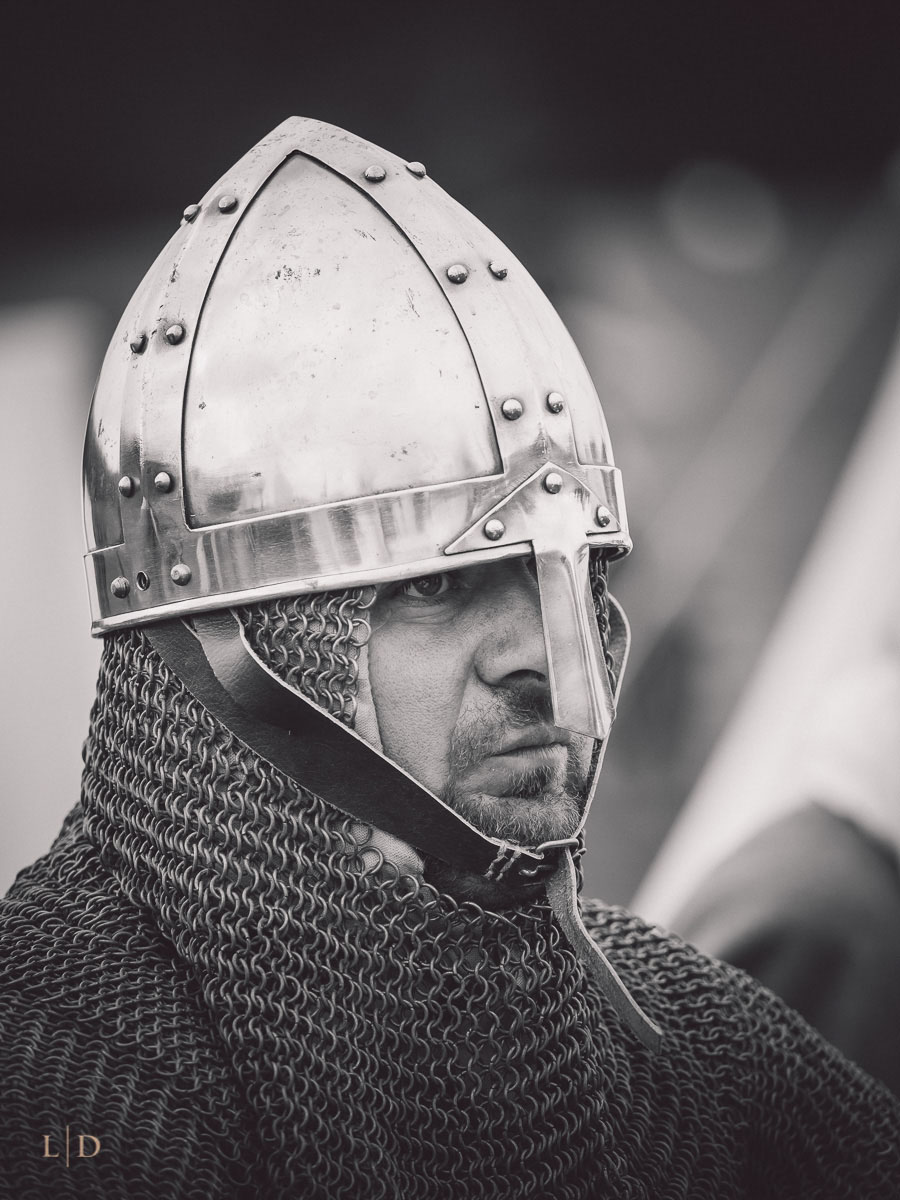Portraits from the Battle of Hastings Historical Re-enactment
“THE BATTLE OF HASTINGS RE-ENACTMENT COMBINES BATTLEFIELD ACTION WITH LIVING HISTORY IN AN AUTHENTIC SETTING”
Learn how the armies lived and fought, and how the battle shaped our history. See the weapons, horses and an impressive recreation of Saxon and Norman encampments.
As I made the journey east deep into 1066 territory to photograph the Battle of Hastings re-enactment I watched the early morning mist rising across the Pevensey Levels. Given that this event is faithfully re-enacted at the same time of the year as the original battle, the weather can be unpredictable at best. My journey took me from my home near the West Sussex coast past the Saxon hamlets of Ditchling, Glynde, Lewes, Hooe, and finally Battle. After the invasion, the landscape was later populated by the many Norman buildings we see today, alongside their Saxon counterparts, and the numerous Norman castles which are part of Britain’s history.
This is an amalgamation post - instead of separate articles for each year, I’ll place my favourite photographs here and will update this piece with my favourite shots each time I attend the battle
I always say this, but if any of you haven’t seen a re-enactment I’d encourage anyone to go along and support these wonderful events. It’s fantastic fun whatever your age or interest level. And you won’t meet a nicer bunch of people – the re-enactors are incredibly knowledgeable about history and the era they represent, so opportunities for learning and asking questions shouldn’t be missed. It was great to see some familiar faces, be they human, canine or equine. It’s fair to say that everyone and their dog will have a camera with them, so coming away with some snaps is virtually mandatory at these affairs. If you’re new to photography getting good shots at a re-enactment isn’t as difficult as you may think. It’s not about stopping people and getting them to pose – instead, shooting naturally and intuitively always captures the best images in my opinion, and that’s how I do things. I was there amongst the public like everyone else – a little patience will pay off. It’s a case of keeping your eyes open and watching until an interesting moment presents itself. And there will be dozens of those. The living history camp is largely static but the battle itself is fast-moving, so you’ll need to be ready to capture the best bits.
Now for the boring bit. I’m frequently asked about my kit – and I will stress that equipment discussions tend to occupy the minds of the amateur communities. Professionals simply choose their equipment based on their own individual working requirements. It’s very much a box ticking exercise, as opposed to a hobby or recreational pursuit where ‘gear acquisition syndrome’ might come into play. That is why most pro photographers will rarely be drawn when asked to discuss one brand over another. I talk to a lot of fellow pros each week – we don’t talk about kit. So I encourage my students and those who get in touch with me to consider their own (real) needs, rather than getting hung up on what anybody else is using.
Today’s tip:
You can get clear shots at an event like this by using a lens with a long focal length. This has the effect of ‘compressing’ and de-cluttering a busy background
Anyway …. for the re-enactment I was carrying my usual working setup consisting of various small and light mirrorless bodies. I favour micro four thirds cameras for their size, great image quality, and high performance. For this sort of outing a wide to tele zoom and a long telephoto zoom will cover all bases. The longer stuff gets dealt with via the Olympus 40-150 f2.8 and the 75 f1.8. If I’m using my Sony cameras I’ll be using the Sony E mount 70-200 f4 G lens, and the 85mm f1.8 or 50mm f1.8. My work covers everything from classic portraiture through to fast-moving animal and sports photography – so superfast performance and ultra fast focussing, married to the whole gamut of optical possibilities is going to be compulsary.
A fairly long day of constant shooting is going to yield hundreds of images which need to be edited/culled then processed and finally exported in which ever form is relevant.
Lastly, a huge thank you to all the wonderful re-enactors who did so much to entertain and inform us over the weekend. You all looked fantastic as always. I hope there weren’t too many nasty injuries – always a risk in these situations no matter how skilled the participants. I know many of you have travelled from across the continent to take part. Hopefully we’ll see you all again next time.
I have an inbuilt fascination for re-enactment photography, with more outings shown in these blog posts:































